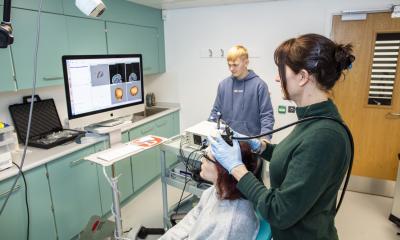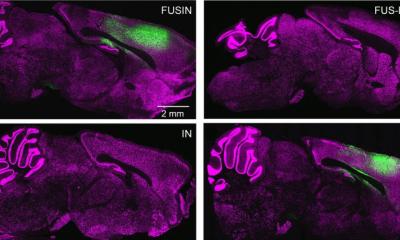Liver Cancer in Cirrhotic Patients Effectively Treated with Radiofrequency Ablation
Researchers from Italy determined that radiofrequency ablation (RFA) is a safe and effective therapy for managing hepatocellular carcinoma (HCC) in cirrhotic patients. The high repeatability of RFA is advantageous in controlling recurrences of cancerous tumors in the liver. Results of this 10-year retrospective study are available in the January 2011 issue of Hepatology, a journal published by Wiley-Blackwell on behalf of the American Association for the Study of Liver Diseases (AASLD).
HCC is the third leading cause of death from cancer worldwide and according to the National Cancer Institute approximately 19,000 deaths due to liver and intrahepatic bile duct cancer occurred in the U.S. in 2010. Studies have shown that many patients with liver cancer also have underlying cirrhosis (scarring of the liver), which complicates cancer management and is often a direct cause of death. Current guidelines recommend surgical resection for early-stage HCC in patients who have adequate liver function and chemical or thermal tumor ablation in cases where surgery is not possible.
In order to evaluate the effectiveness of RFA in managing the initial HCC nodule and recurrences and its impact on survival, a research team led by Sandro Rossi, M.D., from the Policlinico San Matteo Foundation in Pavia, Italy conducted a retrospective study of 706 patients presenting with HCC from January 1998 through January 2008. Percutaneous or laparoscopic RFA was performed, producing one to three thermal lesions with each insertion. Major complications that threatened a patient’s life, produced morbidity, or prolonged the hospital stay were assessed with abdominal ultrasound (3 and 24 hours post RFA), complete blood counts, lactic dehydrogenase, aminotransferase level, and Child-Pugh-related tests.
Researchers classified results as either complete responses (CRs)—no enhancing tissue at the tumor site and normalization of alpha-fetoprotein (AFP) levels; or incomplete responses (IRs)—enhancing tissue at the tumor site, persistently elevated AFP levels, or both. An IR to laparoscopic RFA was classified as treatment failure (TF). When IR was observed after percutaneous RFA, the procedure was repeated within 15 days. An IR to the second percutaneous RFA treatment was then classified as a TF, with these patients then receiving selective transarterial chemoembolization (sTACE).
Results showed that CRs were obtained in 696 patients (98.5%) and 465 (66.8%) of these patients experienced a first recurrence during follow-up (median-29 months). RFA was repeated in 323 (69%) of patients with first recurrence, restoring disease-free status in 318 (98%) cases. In 223 patients there was a second recurrence and RFA was repeated in 147 (66%), with disease-free status obtained in 145 (98%) of cases.
“RFA is safe and effective for managing HCC in patients with cirrhosis,” confirmed Dr. Rossi. Overall, 1326 HCC nodules were managed with 1921 RFA sessions (percutaneous-1840; laparoscopic-81), with no procedure-related deaths, and fewer than 1.0% of sessions with major complications. After repeated RFAs the estimated 3-year overall and disease-free survival rates were 67% and 40%; 5-year rates were 68% and 38%.
The researchers noted that optimal treatment strategies for cirrhotic patients with HCC is limited by the unpredictability of tumor progression, tumor understaging, and substantial risk of death unrelated to HCC. “Our experience indicates that RFA should be the treatment of choice for patients with one or two small HCCs,” concluded Dr. Rossi. “Further research focusing on identifying tumor cell markers and genetic profiles associated with HCC growth patterns will ultimately help to develop individualized treatment strategies for managing liver cancer.”
“Repeated Radiofrequency Ablation for Management of Cirrhotic Patients with Small Hepatocellular Carcinomas: A Long-term Cohort Study.” Sandro Rossi, Valentina Ravetta, Laura Rosa, Giorgia Ghittoni, Francesca Torello Viera, Francesco Garbagnati, Enrico Maria Silini, Paolo Dionigi, Fabrizio Calliada, Pietro Quaretti, Carmine Tinelli. Hepatology; Published Online: October 21, 2010 (DOI: 10.1002/hep.23965); Print Issue Date: January 2011. http://onlinelibrary.wiley.com/doi/10.1002/hep.23965/abstract.
22.12.2010











